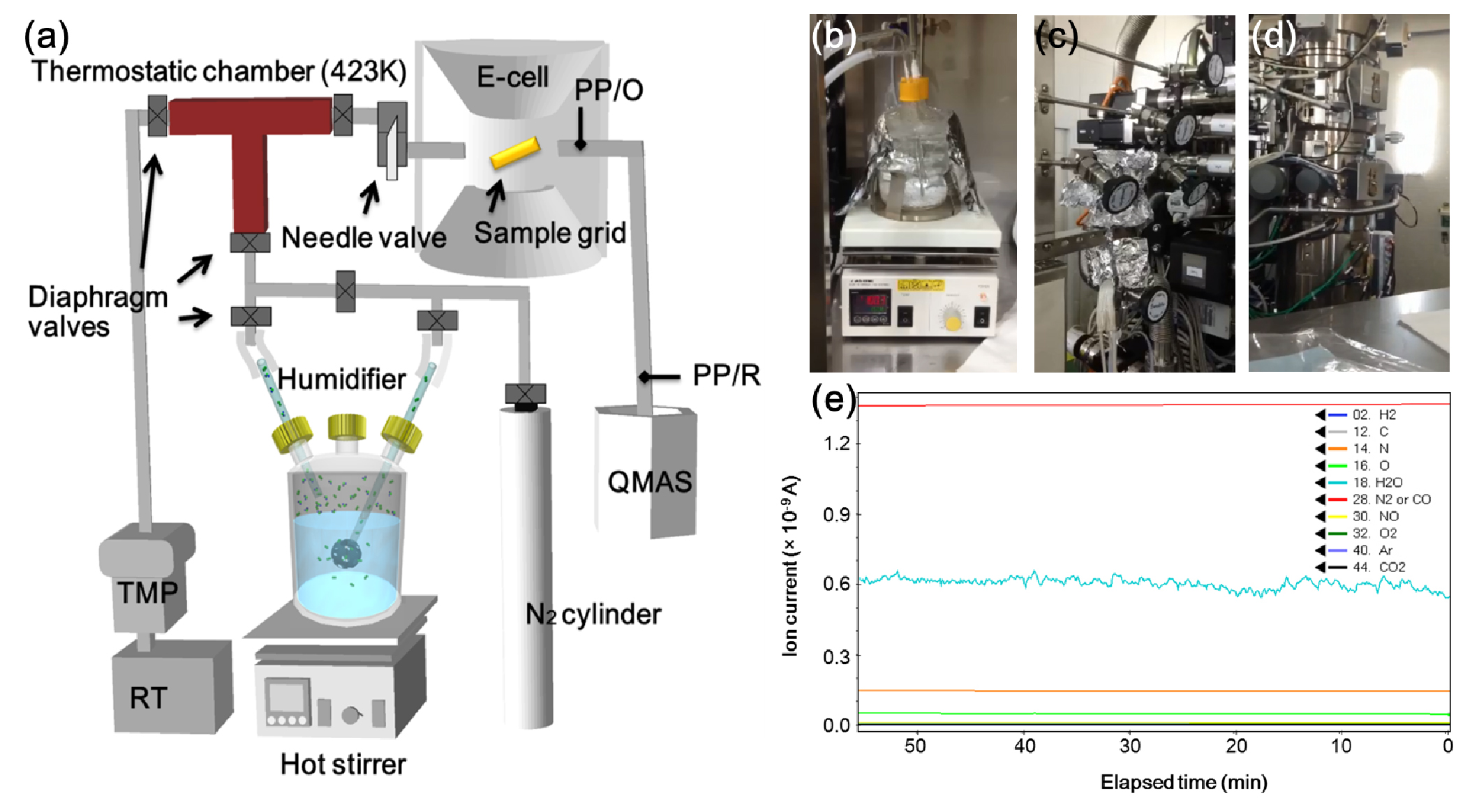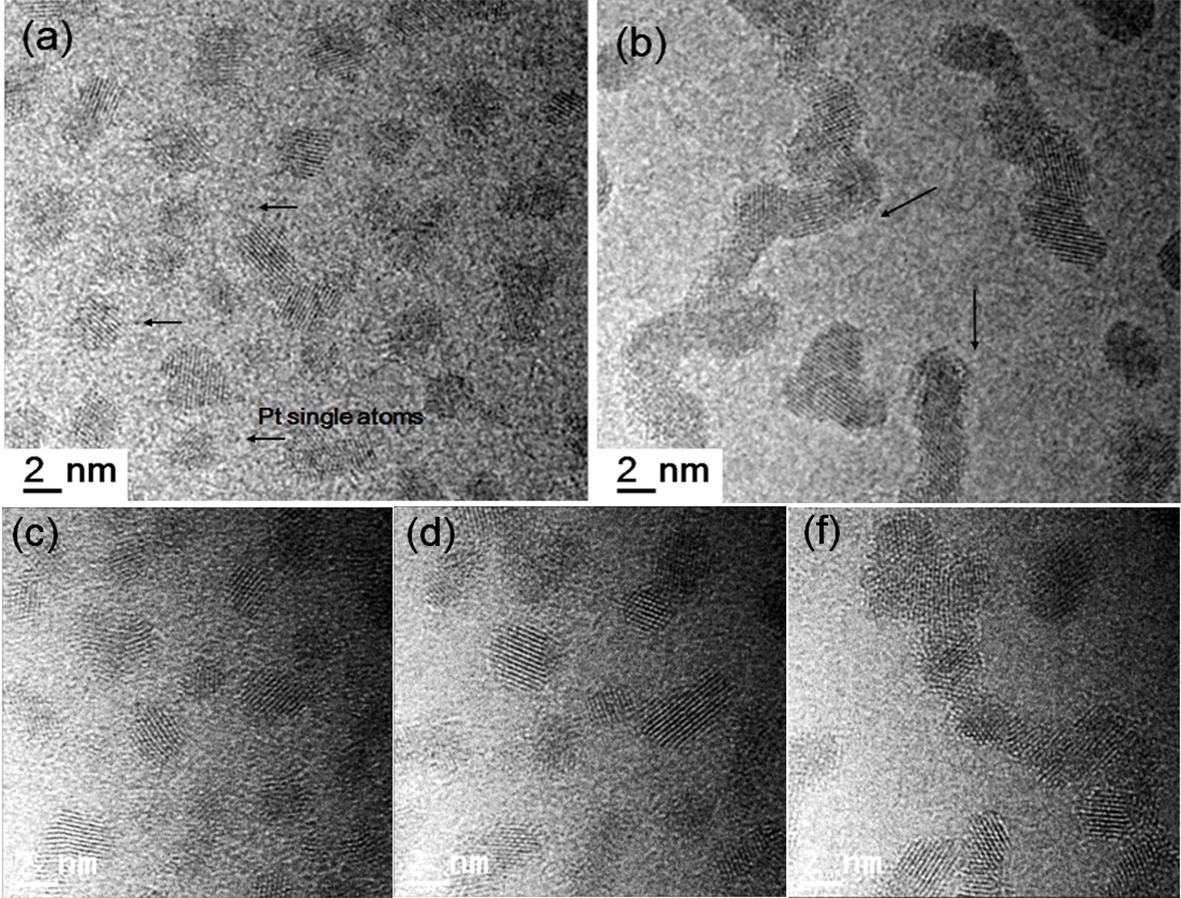IT-6-P-2722 Development Aberration Corrected Wet-ETEM System and Its Application to Pt/Carbon Fuel Cell Catalysts in Moisturized Gases Environments
Environmental transmission electron microscopy (ETEM), which was first reported in 1997, has proven to be one of the most efficient tools for in situ visualisation of the deactivation of heterogeneous catalysts in a reactive gas atmosphere at the nanometer scale. Development of wet environmental TEM (wet-ETEM) was also an essential for in situ studies of liquid-catalyst reactions [1].
Here we report a progressive gas injection system (Figure 1) for the latest spherical aberration corrected environmental transmission electron microscope [2-4], which enables real-time/atomic-sacale observation in moisturised gas atmospheres. The newly developed wet-ETEM system [5] is applied to platinum carbon electrode (Pt/Carbon) catalysts in proton exchange membrane fuel cells (PEMFC) to investigate the effect of water molecules on the Platinum/Carbon interface during deactivation processes such as sintering and corrosion.
Pt/Carbon is a typical electrode catalysts in PEMFC. But it is now well established that degradation of the carbon support at the cathode limits the lifetime of Pt/Carbon catalysts and thus the performance of the PEMFC. We evaluated the robustness of the Pt/Carbon electrode catalysts using the new Wet-ETEM system (Figure 1(b)-(d)). Humidity in the E-cell was accurately measured/controlled using the quadrupole mass spectrometer (Figure 1(e)). Sintering and migration of Pt nanoparticles observed in moisturized N2 atmosphere was extremely faster than ones in pure N2 atmosphere as shown in Selected Area Captured (SAC) images of Figure 2. Fig. 2(b) shows connected Pt nanoparticles, which were typically observed in wet condition. The damage and shrinking of carbon is not reason of such connection because granular pattern of carbon support is still surviving. White contrast surrounding the Pt connections (arrowed in Fig. 2(b)) also indicates that thickness of carbon films became thinner at Pt/Carbon interface because of the hydrocarbon desorption. We considered that physical adsorption of water and hydroxylation of the carbon surface is a main reason of the higher mobility of Pt nanoparticles observed in moisturized N2 atmosphere. The present in situ observation suggested we should induce much stronger trapping sites on the carbon supports for use on cathode in the PEMFC. In situ microscopy to show the dynamic behaviour of the fuel cell catalyst is thus very valuable to improve understanding of the degradation mechanisms and thus improve robustness.
[1] Gai P. L. et al., Microsc. Microanal. 8 (2002) 21.
[2] Yoshida K. et al., J Electron Microsc. 61 (2012) 99.
[3] Yoshida K. et al., Nanotech. 24 (2013) 065705.
[4] Yoshida K. et al., Microsc. 62 (2013) 571.
[5] Yoshida K. et al, Invited Paper, MMC 2014 Conf. Proceedings, and Nanotechnology (sub).
The authors thank the EPSRC (UK) for Critical mass grant EP/J018058/1 and The JSPS for a Grant-in-Aid for Young Scientific Researchers (B) (No. 24710110).

